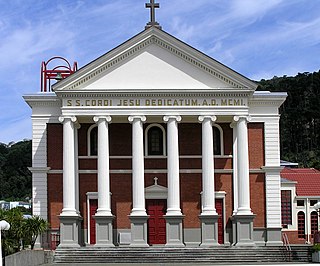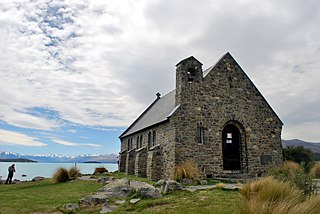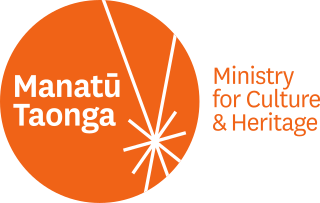Related Research Articles

The Catholic Church in New Zealand is part of the worldwide Catholic Church under the leadership of the Pope in Rome, assisted by the Roman Curia, and with the New Zealand bishops.

Dame Whina Cooper was a respected kuia, who worked for many years for the rights of her people, and particularly to improve the lot of Māori women. She is remembered for leading the 1975 Māori land march from Te Hāpua to Wellington, a distance of 1,100 km (680 mi), at the age of 79.

Sir Māui Wiremu Pita Naera Pōmare was a New Zealand medical doctor and politician, being counted among the more prominent Māori political figures. He is particularly known for his efforts to improve Māori health and living conditions. However, Pōmare's career was not without controversy: he negotiated the effective removal of the last of Taranaki Māori land from its native inhabitants – some 18,000 acres – in a move which has been described as the "final disaster" for his people. He was a member of the Ngati Mutunga iwi originally from North Taranaki; then Wellington, and the Chatham Islands after their 1835 invasion.
The following lists events that happened during 1955 in New Zealand.
The following lists events that happened during 1903 in New Zealand.
The following lists events that happened during 1943 in New Zealand.

Te Ara: The Encyclopedia of New Zealand is an online encyclopedia established in 2001 by the New Zealand Government's Ministry for Culture and Heritage. The web-based content was developed in stages over the next several years; the first sections were published in 2005, and the last in 2014 marking its completion. Te Ara means "the pathway" in the Māori language, and contains over three million words in articles from over 450 authors. Over 30,000 images and video clips are included from thousands of contributors.

Francis William Mary Redwood SM, was the first Roman Catholic Archbishop of Wellington, Metropolitan of New Zealand.

Women's suffrage was an important political issue in the late-nineteenth-century New Zealand. In early colonial New Zealand, as in European societies, women were excluded from any involvement in politics. Public opinion began to change in the latter half of the nineteenth century and after years of effort by women's suffrage campaigners, led by Kate Sheppard, New Zealand became the first nation in the world in which all women had the right to vote in parliamentary elections.

Christianity in New Zealand dates to the arrival of missionaries from the Church Missionary Society who were welcomed onto the beach at Rangihoua Bay in December 1814. It soon became the predominant belief amongst the indigenous people, with over half of Māori regularly attending church services within the first 30 years. Christianity remains New Zealand's largest religious group, but no one denomination is dominant and there is no official state church. According to the 2018 census 37.3% of the population identified as Christian. The largest Christian groups are Anglican, Catholic and Presbyterian. Christian organisations are the leading non-government providers of social services in New Zealand.

The Dictionary of New Zealand Biography (DNZB) is an encyclopedia or biographical dictionary containing biographies of over 3,000 deceased New Zealanders. It was first published as a series of print volumes from 1990 to 2000, went online in 2002, and is now a part of Te Ara: The Encyclopedia of New Zealand. The dictionary superseded An Encyclopaedia of New Zealand of 1966, which had 900 biographies. The dictionary is managed by the Ministry for Culture and Heritage of the New Zealand Government. An earlier work of the same name in two volumes containing 2,250 entries, published in 1940 by Guy Scholefield with government assistance, is unrelated.
The colonial secretary of New Zealand was an office established in 1840 and abolished in 1907. The office was similar to colonial secretaries found elsewhere in the British Empire.

The Ministry for Culture and Heritage is the department of the New Zealand Government responsible for supporting the arts, culture, built heritage, sport and recreation, and broadcasting sectors in New Zealand and advising government on such.
The former New Zealand parliamentary electorate on the western inner city of Auckland, was known as City of Auckland West from 1861 to 1890, and then Auckland West from 1905 to 1946.
Max Takuira Matthew Mariu was the Auxiliary Bishop of Hamilton, New Zealand (1988–2005). He was the first Māori to be ordained a Catholic bishop.
Heremia Te Wake was a notable New Zealand tribal leader, farmer, assessor and catechist. Of Māori descent, he identified with the Te Rarawa iwi. He was born in Te Karaka, Northland, New Zealand. Celebrated land activist Whina Cooper was his daughter. She would help him in his work, as she would take a deep interest for such things.

Margaret Mary Butler was a New Zealand sculptor and artist and is regarded as the first New Zealand born sculptor of substance.

German New Zealanders are New Zealand residents of ethnic German ancestry. They comprise a very large amount of New Zealanders in terms of heritage, with some 200,000 people from the country having at least partial German ancestry. New Zealand's community of ethnic German immigrants constitute one of the largest recent European migrant groups in New Zealand, numbering 12,810 in the 2013 census. 36,642 New Zealanders spoke the German language at the 2013 census, making German the seventh-most-spoken language in New Zealand.
References
- ↑ The Encyclopedia of New Zealand
- ↑ "Catholic Worker New Zealand". Archived from the original on 5 February 2013. Retrieved 19 September 2013.
- ↑ Dictionary of New Zealand Biography
- ↑ Francis Petre, 1847-1918 by Philippe Hamilton
- ↑ The Encyclopedia of New Zealand
- ↑ Taonga, New Zealand Ministry for Culture and Heritage Te Manatu. "3. – Catholic Church – Te Ara Encyclopedia of New Zealand". www.teara.govt.nz. Retrieved 21 April 2017.
- ↑ "Close Up - Following the Leader (Jim Bolger) | Television | NZ On Screen". www.nzonscreen.com. Retrieved 21 April 2017.
- ↑ Cyclopedia Company Limited (1902). "Mr. Peter Dignan". The Cyclopedia of New Zealand : Auckland Provincial District. Christchurch: The Cyclopedia of New Zealand . Retrieved 1 March 2012.
- ↑ G.W.A. Bush, Decently and in Order: The Government of the City of Auckland 1840-1971, Collins, 1971, p.521.
- ↑ "Church has vital place in our secular society". Challenge Weekly. Vol. 66, no. 6. 25 February 2008. Archived from the original on 4 March 2008. Retrieved 1 October 2009.
- ↑ Colin James, Bill English conservative: a 2000s update Archived 10 February 2012 at the Wayback Machine , New Zealand Herald Weekend Review, 2 December 2006.
- ↑ Taonga, New Zealand Ministry for Culture and Heritage Te Manatu. "Savage, Michael Joseph". www.teara.govt.nz. Retrieved 21 April 2017.
- ↑ "Articles - Dr Michael Bassett". www.michaelbassett.co.nz. Retrieved 21 April 2017.
- ↑ Oliver, Steven. "Heremia Te Wake". Dictionary of New Zealand Biography . Ministry for Culture and Heritage . Retrieved 23 April 2017.
- ↑ The Encyclopaedia of New Zealand biography
- ↑ Sir Joseph Ward: A Political Biography by Michael Bassett (1993, Auckland University Press)
- ↑ "Player profile - Mark Beban". ESPN . Retrieved 6 January 2011.
- ↑ Felix Donnelly, One Priest's Life, Australia and New Zealand Book Company, Auckland, 1982.
- ↑ Queen's Birthday Honours List 1998. Department of the Prime Minister and Cabinet. Retrieved 4 January 2013.
- ↑ "Rev. Fr. George Henry Duggan SM Obituary: View George Duggan's Obituary by The Dominion Post". Deaths.dompost.co.nz. Retrieved 9 January 2013.
- ↑ Lyndsay Freer, "George Henry Duggan – the man, the myth", Marist Messenger, 1 July 2012 (Retrieved 9 January 2012)
- ↑ Laracy, Hugh. "David Kennedy". Dictionary of New Zealand Biography . Ministry for Culture and Heritage . Retrieved 23 April 2017.
- ↑ "Kiwi ordained for St Peter fraternity", NZ Catholic, Apr. 6-19, 2008, p. 2.
- ↑ (E) Croatian Antony Sumich Story, Crown Croatian World Network, Antony Sumich, 2005 (accessed 29 June 2010)
- ↑ St Anthony's Parish, Calgary, Alberta, Canada, clergy list (Retrieved 12 August 2013)
- ↑ Mariu, Max T. "Te Awhitu, Wiremu Hakopa Toa 1914 - 1994". Dictionary of New Zealand Biography . Ministry for Culture and Heritage . Retrieved 4 April 2011.
- ↑ Wright, Marie Gabrielle. "Mary St Domitille Hickey". Dictionary of New Zealand Biography . Ministry for Culture and Heritage . Retrieved 23 April 2017.
- ↑ Engel, Pauline F. "Mary Gonzaga Leahy". Dictionary of New Zealand Biography . Ministry for Culture and Heritage . Retrieved 23 April 2017.
- ↑ The Encyclopedia of New Zealand
- ↑ "Nun works behind bars to improve lives of others". stuff.co.nz. 2011. Retrieved 6 June 2011.
15 years as Rimutaka Prison's Catholic chaplain
- ↑ "Arvidson, K.O.", Robinson and Wattie, The Oxford Companion to New Zealand Literature, Oxford, Auckland 1998, pp. 27 and 28.
- ↑ "K. O. Arvidson | NZETC". nzetc.org. 2012. Retrieved 12 January 2012.
K. O. Arvidson 1938–
- ↑ James Baxter biography from the Dictionary of New Zealand Biography
- ↑ Broughton, W. S. "Patrick Anthony Lawlor". Dictionary of New Zealand Biography . Ministry for Culture and Heritage . Retrieved 23 April 2017.